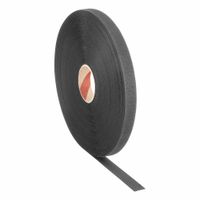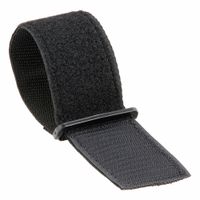Call +(254) 703 030 000 / 751 483 999 / 721 704 777
.....Read More
Frequently Asked Questions
What are hook and loop fasteners used for?
Hook and loop fasteners, commonly known by the brand name Velcro, are versatile fastening solutions used across a vast array of applications due to their ease of use, reusability, and strong, yet adjustable, hold.
In clothing and accessories, they are frequently found on shoes, jackets, and bags, providing quick and secure closures that are simpler to manipulate than zippers or buttons, especially for children or individuals with dexterity challenges. Medical applications also benefit greatly, with hook and loop fasteners being integral to blood pressure cuffs, braces, and bandages, allowing for precise and comfortable adjustments.
Beyond personal items, their utility extends to home organization for securing cables, hanging lightweight decorations, or attaching removable upholstery. In industrial and automotive sectors, they are used for securing panels, wiring, and components due to their vibration-dampening properties and ability to provide a flexible attachment. Even in aerospace, these fasteners are employed for securing equipment and interior components, highlighting their reliability in diverse environments.
Their design, consisting of two components—one with tiny hooks and the other with soft loops—allows for repeated engagement and disengagement, making them a practical alternative to traditional fasteners where frequent opening and closing are required.
How do hook and loop fasteners work?
Hook and loop fasteners, commonly known by the brand name Velcro, work through a simple yet effective mechanical interlocking system. One side of the fastener consists of numerous tiny, stiff "hooks," typically made of plastic or nylon. The other side is covered with soft "loops," often made from nylon or polyester fabric. When the two sides are pressed together, the hooks catch onto the loops, creating a strong bond.
The strength of the bond depends on several factors, including the number of hooks and loops per square inch, the material properties of the hooks and loops, and the applied pressure. To separate the fastener, the two surfaces are pulled apart. This action causes the hooks to straighten out, releasing them from the loops. The "ripping" sound often associated with hook and loop fasteners is the sound of thousands of tiny hooks detaching from their corresponding loops.
These fasteners are incredibly versatile and are used in a wide range of applications, from clothing and footwear to medical devices and industrial equipment, due to their ease of use, durability, and reusability.
What is the difference between hook and loop and Velcro?
Hook and loop is a generic term for a fastening system that consists of two components: a "hook" side with tiny, stiff hooks, and a "loop" side with softer, fuzzy loops. When pressed together, the hooks catch in the loops, creating a strong but temporary bond.
Velcro, on the other hand, is a specific brand name of hook and loop fastener. It was invented by George de Mestral in the 1940s and is widely recognized for its distinctive "ripping" sound when separated. While all Velcro fasteners are hook and loop, not all hook and loop fasteners are Velcro, similar to how all tissues are not Kleenex. The term "Velcro" has become so ubiquitous that it's often used generically to refer to any hook and loop fastener, regardless of the manufacturer.
How strong are hook and loop fasteners?
Hook and loop fasteners, commonly known by the brand name Velcro, derive their strength from the thousands of tiny hooks engaging with an equal number of soft loops. The strength of these fasteners depends on several factors: * **Type of Material:** Different materials used for the hooks and loops (e.g., nylon, polyester) have varying tensile strengths. Nylon is generally more durable and stronger.
* **Surface Area:** A larger surface area of engagement between the hook and loop increases the overall holding power. This is why wider or longer strips are stronger.
* **Shear vs. Peel Strength:** Hook and loop fasteners are much stronger in shear (when pulled parallel to the surface of attachment) than in peel (when pulled perpendicular to the surface, like peeling off a sticker). Peel strength is typically much lower.
* **Application and Cycles:** Repeated opening and closing (cycles) can wear down the hooks and loops, reducing their effectiveness over time. Environmental factors like dirt, lint, and moisture can also degrade performance.
* **Adhesive:** If the fastener is attached with an adhesive, the strength of the bond to the substrate is also a critical factor.While individual hooks and loops are weak, their collective action provides significant holding power, making them suitable for a wide range of applications from clothing to industrial uses.
Can hook and loop fasteners be washed?
Yes, hook and loop fasteners can generally be washed, but it's important to follow specific guidelines to maintain their effectiveness. For optimal results, it's recommended to close the fasteners before washing to prevent lint and debris from accumulating in the hooks and loops, which can reduce their gripping power. Washing them in a mesh laundry bag can also help protect them from snags and prevent them from attaching to other items in the wash. Use a gentle cycle with cold or warm water and a mild detergent. Avoid using bleach or fabric softeners, as these can damage the fibers and weaken the adhesive or the material itself. After washing, air drying is preferred, as high heat from a dryer can melt or deform the plastic hooks and loops, leading to a loss of fastening ability. If machine drying is necessary, use a low heat setting. Regularly washing your hook and loop fasteners can help remove dirt and lint, which can improve their performance and extend their lifespan.
How do you cut hook and loop fasteners to size?
To cut hook and loop fasteners to size, you can use a sharp pair of scissors. If you want to prevent fraying, you can use a hot knife or singe the edges with a lighter. For best results, measure the desired length and width, mark it with a pen or marker, and then cut along the lines. If you're cutting multiple pieces, it can be helpful to create a template.
Are hook and loop fasteners reusable?
Yes, hook and loop fasteners are generally reusable. The degree of reusability depends on several factors, including the quality of the materials, the frequency of use, and the conditions of use (e.g., exposure to dirt, moisture, or extreme temperatures). High-quality hook and loop fasteners, often made with durable nylon or polyester, can withstand thousands of cycles of opening and closing before showing significant wear. The "hooks" gradually lose their stiffness and ability to engage with the "loops" over time, and the "loops" can become matted or filled with debris, reducing their effectiveness. However, for many applications, particularly those with intermittent use, these fasteners offer a convenient and durable alternative to other fastening methods like buttons, zippers, or adhesives, allowing for repeated attachment and detachment. Regular cleaning can also help extend their lifespan.
What materials can hook and loop fasteners adhere to?
Hook and loop fasteners, commonly known by the brand name Velcro, can adhere to a wide variety of materials due to the nature of their design. The "hook" side, typically made of nylon or polyester, features tiny, stiff hooks that can engage with the fibrous loops on the "loop" side. For effective adhesion, the material needs to have a surface that can provide these loops or a texture that the hooks can grip onto.
Common materials that hook and loop fasteners adhere well to include: * **Fabrics:** Most textiles, especially those with a fuzzy or napped surface like felt, fleece, carpets, and some types of cotton, provide excellent surfaces for the hooks to latch onto.
* **Rough or porous surfaces:** Materials like unfinished wood, cardboard, and some types of plastic that have a slightly textured or porous surface can sometimes allow the hooks to dig in and create a bond, though this is less reliable than with fabrics.
* **Foam:** Certain types of foam, particularly open-cell foams, can provide a suitable surface for the hooks to engage with.
* **Plastics (with adhesive backing):** While the hooks won't directly adhere to smooth, hard plastics, hook and loop fasteners often come with an adhesive backing that can stick to almost any clean, smooth surface, including various plastics, metal, glass, and painted surfaces. In these cases, the adhesion is between the adhesive and the surface, rather than the hooks directly with the material itself.Materials that are generally not suitable for direct hook and loop adhesion include very smooth, non-porous surfaces like polished metal, glass, and some high-gloss plastics, as there is nothing for the hooks to grip onto. However, as mentioned, an adhesive-backed version can overcome this limitation.
How do you install hook and loop fasteners?
Hook and loop fasteners, commonly known by the brand name Velcro, are a versatile way to secure items. The installation method depends on the specific type of fastener, but generally involves preparing the surfaces, attaching the hook and loop components, and ensuring a strong bond.
For adhesive-backed fasteners, first clean and dry both surfaces thoroughly to ensure optimal adhesion. Peel off the protective backing from one side (either hook or loop) and firmly press it onto one of the surfaces. Apply even pressure across the entire strip to eliminate air bubbles and ensure full contact. Repeat this process for the other side of the fastener on the corresponding surface, making sure to align them correctly so they can mate effectively. Allow the adhesive to cure for the recommended time (often 24 hours) before applying significant stress to the bond.
For sew-on fasteners, position the hook and loop pieces on the desired fabrics. Use a sewing machine or hand-sew around the perimeter of each piece, ensuring strong and secure stitches. Reinforce the corners for added durability.
For fasteners requiring screws or rivets, mark the positions for the holes on the surface. Drill pilot holes if necessary, then attach the fastener components using the appropriate screws or rivets. Ensure they are tightened securely but do not overtighten, which could damage the fastener or the surface.
Regardless of the type, always ensure the hook and loop pieces are properly aligned for effective engagement.
What are the advantages of using hook and loop fasteners?
Hook and loop fasteners offer several advantages across various applications. They provide a strong, reliable, and adjustable closure method, making them highly versatile. Their ease of use is a significant benefit; they can be quickly opened and closed without requiring complex mechanisms, making them ideal for items that need frequent access. Unlike zippers or buttons, hook and loop fasteners can be opened and closed quietly. They are also highly durable, capable of withstanding numerous cycles of attachment and detachment, and are resistant to dirt, dust, and moisture, maintaining their effectiveness in various environments. Furthermore, their flexibility allows them to conform to irregular shapes, providing a secure hold even on uneven surfaces. This makes them a preferred choice in industries ranging from apparel and footwear to automotive and medical devices, where quick, secure, and flexible fastening solutions are essential.


